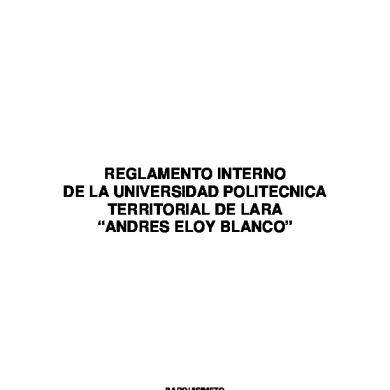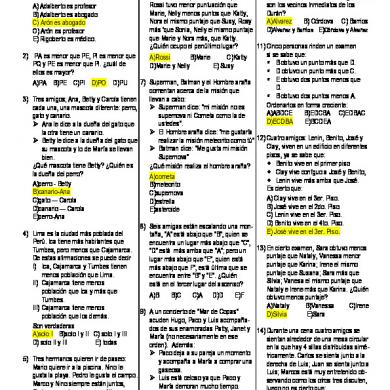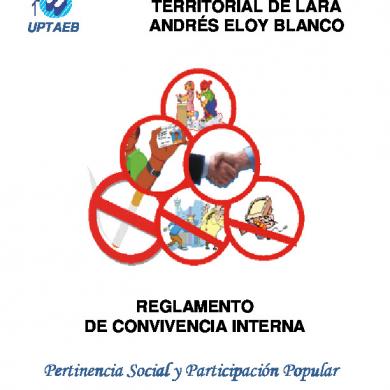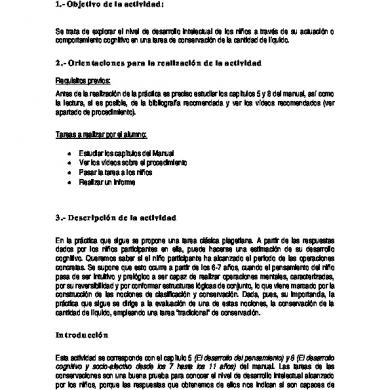Myofascial Cupping
This document was uploaded by user and they confirmed that they have the permission to share it. If you are author or own the copyright of this book, please report to us by using this DMCA report form. Report DMCA
Overview
Download & View Myofascial Cupping as PDF for free.
More details
- Words: 1,743
- Pages: 4
Loading documents preview...
Myofascial Vacuum Cupping By Robert Granter BSocSci AdDipRemMass What is Myofascial Vacuum Cupping? A vacuum pump is used to induce a vacuum inside a cylinder sealed to the skin by the use of oil or cream. The vacuum “draws” the soft tissue perpendicular to the skin thus providing a tensile force to the soft tissue system, which can be left in one site for a prolonged period or moved along the tissue. I believe the modality is an essential tool for the Remedial Therapist for effective soft tissue mobilisation & for taking stress off the practitioner’s fingers. It has been used by many cultures throughout the world to relieve various musculo-skeletal and systemic symptoms however our explicit focus is on the mobilisation of the myofascial system. How does Myofascial Vacuum Cupping positively change tissue mobility? There are a number of theories as to how external force like that applied from Myofascial Vacuum Cupping positively impacts on soft tissue. The following are 4 examples: 1. The Stimulation of Fibroblast activation: The applied force may stimulate the fibroblasts within the connective tissue to maintain an ideal level of glycoaminoglycans. This may permit optimal retention of water molecules to allow the ground substance to maintain an ideal volume. 2. The Disruption of excessive collagen cross linkages: The external force supplied may also disrupt any unnecessary collagen cross linkages that may already exist that are binding adjacent collagen fibres together.
Terra Rosa e-magazine, No. 9 (December 2011)
3. The Thixotropic-like nature of connective tissue: (or the Plastic deformation model) The founder of the Rolfing technique, Ida Rolf, used this explanation to account for the changes evident in fascial tissue after treatment – If something is thixotropic it means that it is capable of changing its state, for example, from a dense thickened form to a more fluid “plastic” form when external energy is applied. Many now discredit this concept in relation to connective tissue however if we advance an explanation of delayed thixotrophy where the effect occurs over time and NOT instantaneously post treatment it may still be a relevant concept. 4. Through the Activation of mechano-receptors: Highly respected clinician & researcher Robert Schleip in particular has thrown doubt on the above theories in favour of a more neurological explanation where mechano-receptors are activated by the application of external force and the nervous system responds. As the arguments continue and research develops our understanding will become more clear. All the above theories may offer components of the complete answer. Are there any clinical trials that show the efficacy of cupping? In the June 2009 issue of Journal Pain, Michalsen and fellow researchers from Germany reported the results of a randomized trial on the clinical effects of traditional cupping therapy in patients with carpal tunnel syndrome are presented. Michalsen et al recruited 52 patients with a carpal tunnel syndrome (CTS) and randomized them into 2 groups. The experimental group patients were treated
17
Myofascial Vacuum Cupping with a single application of wet cupping, and control patients with a single local application of heat within the region overlying the trapezius muscle. Patients were followed up on day 7 after treatment. The primary outcome, severity of CTS symptoms, was statiscally reduced at day 7 in the cupping group. The researchers found that cupping of segmentally related shoulder zones appears to alleviate the symptoms of carpal tunnel syndrome. “The treatment was safe and well tolerated and conclude that cupping therapy may be effective in relieving the pain and other symptoms related to CTS.”
their risk of bruising. This fact doesn’t prohibit Myofascial Vacuum Cupping but it is wise to be aware of the potential adverse reactions and to be conservative in your application of the technique. Are there specific Principles of Application of Myofascial Vacuum Cupping to limiting adverse tissue reaction?
What are the Body regions most suited for the Myofascial Vacuum Cupping technique? Myofascial Vacuum Cupping is ideally suited to treating the superficial fascial layer and the deeper irregular dense fascial layers around the following structures: Upper Trapezius, and Levator Scapula Deltoid Thoraco-lumbar Fascia and Longissimus Hamstrings and Quadriceps Lateral & Anterior lower leg compartments
Photo showing the potential bruising of the tissue from vacuum cupping. While this reaction is common in the traditional methods of vacuum cupping, in the western model that we are recommending we attempt to keep bruising to a minimum. Source: http://home.indy.rr.com/mkimpel/ Acupuncture/cuppingpix.htm
Is Vacuum Cupping Completely Safe?
Cupping has the potential to significantly bruise tissue I believe that MVC should be applied by a skilled practi- and this is to be avoided in the style of cupping we are tioner and certain contra-Indications apply in exactly advancing. the same way as direct hands-on treatment. How can you maximize the effectiveness of the Examples of absolute contra-Indications to MVC are: treatment and limit adverse tissue reaction? Skins lesions, skin fragility, Myofascial attachment sites to bone.
We suggest that there are 4 Vital Signs to adhere to, that will minimise bruising, they are
History of Vascular disease eg Previous incidents of Deep vein thrombosis Varicose veins
1. Watch and monitor the colour of the tissue being treated and do not allow the tissue to become a red/ purple colour keep it to a pink colour. As soon as the colour changes to a red/purple remove the cup.
Examples of Relative Contra-Indications are:
The release of Relaxin and other hormones during preg- 2. Don’t leave the cups on for more than 2 minutes nancy, to allow the connective tissue in the pelvis to initially. elongate and allow the child to move through the birth 3. Be aware of your patients skin type: Fair skin will canal, may also cause the general fascia structure to bruise more easily than “olive” skin change with less external force than the tissue in nonpregnancy mode. It is therefore wise, as with any tech4. Monitor the degree of Vacuum inside the cup by nique during pregnancy, to be conservative and watch watching the degree of Skin raise within the vacuum the tissue carefully to ensure adverse reaction doesn’t cup to ensure it is not excessive. occur As a guide only draw the skin approximately ¾ of the Patients taking specific medications, e.g. Blood thinning way up to the 1st treatment line on the cup medications like Asprin and Warfarin may increase
Terra Rosa e-magazine, No. 9 (December 2011)
18
Myofascial Vacuum Cupping Can you give some Practical examples of how Myofascial Vacuum Cupping can be applied? If the Thoraco-lumbar Fascia, Longissimus or Iliocostalis are assessed to be hypomobile then a number of techniques can be used to treat that dysfunction, for example using Static cupping. The steps are
1. Apply cream or oil to the above region, begin superior to the crest of the Illium 2. Place a Size 1. (45mm) cup on the left side in the center of the Ilio-costalis / Longissimus Muscles and the Superficial Thoraco-lumbar fascia just below the “target tissue”. Avoid contact with the Spinous Processes and the Iliac crest.
Sliding cupping
3. Monitor the level of Skin raise and stop at a point 3/4 Sliding Cupping can also be used. The steps are ‘s the way up to the first cup line. Monitor also the Skin Colour. Ask the patient “How does it feel?” The re1. Apply cream or oil to the above region sponse we want is “A mild Stretching feeling” Begin just below, inferior, to the target tissue and place 4. Place and secure a cup at the same place on the right a 45mm cup on the center of the Longissimus / Thoraco -lumbar Fascia. Again avoid contact with the Spinous 5. Remove the 1st cup and place it superior to the origiProcesses nal position of the 1st cup (i.e. Still on the Left Longissimus) 2. Use ½ Full Pump Stroke or stop at a point of skin raise 3/4 ‘s the way up to the first cup line 6. Remove the 2nd cup and place it superior to the original position of the 2nd cup (i.e. Still on the Right Long- Leave the cup in place and Remove Pump and Monitor issimus) the Skin Colour. ASK & OBSERVE 7. Continue this “leap frog” method until you reach the level above the target tissue. Remove cups and repeat the same process, steps 1 to 7, twice more.
3. Move the cup by sliding it slowly superiorly all the way through the Target tissue and back down again. Apply a zig-zag motion as the cup is moved to activate as many mechano-receptors as possible for improved treatment effectiveness If the Resistance within the cup is INSUFFICIENT Increase the level of Vacuum until the first onset of resistance is felt.
Terra Rosa e-magazine, No. 9 (December 2011)
19
Myofascial Vacuum Cupping Repeat until a MILD pink Colour is produced in the tar- References get tissue. Chirali I. 1999 Cupping Therapy Churchill Livingstone Reassess to check the effectiveness of the technique Granter R. 2010. The Myofascial Vacuum Cupping ManThese are only two of the possible methods of applicaual. R L Granter & Ass, Melbourne tion that can be used with Myofascial Vacuum Cupping. Please refer to the DVD “Vacuum Cupping For Myofas- Health Education Assets Library, 2009 MindBodySpirit Website 2010 viewed 10/6/2010 URL http:// cial Mobilisation in Clinical Practice” by Rob Granter available through Terra Rosa for more detailed informa- www.mindbodysoul.tv/uploads/pics/Cup2_01.jpg tion. Michalsen A, Bock S, Lüdtke R, Rampp T, Baecker M, Rob conducts training courses in this specific style of Myofascial Vacuum Cupping. Contact Rob through his website http:// www.softtissuetherapyonline.com/ for more information. Read also 6 Questions to Rob on page 41 .
Bachmann J, et al. Effects of traditional cupping therapy in patients with carpal tunnel syndrome. A randomized controlled trial. J Pain. 2009;10:601–608. Schleip R. 2003. Fascial plasticity- a new neurobiological explanation. Journal of Bodywork and Movement Therapies Part 1: 7(1), pp11-19 & Part 2: 7(2) pp104-116
Vacuum Cupping for Myofascial Mobilisation An Essential Tool for Soft Tissue Therapists
This new DVD by Robert Granter will show you an efficient use of Vacuum Cupping for the Soft Tissue Therapist. The cupping technique is anatomically specific myofascial mobilisation. Unlike traditional cupping methods which can usually create bruise on the skin, these new and innovative techniques are anatomically based for myofascial mobilization. It can be integrated into your massage treatment and reduce excessive stress on the therapist's body. Available from www.terrarosa.com.au
Terra Rosa e-magazine, No. 9 (December 2011)
20
Terra Rosa e-magazine, No. 9 (December 2011)
3. The Thixotropic-like nature of connective tissue: (or the Plastic deformation model) The founder of the Rolfing technique, Ida Rolf, used this explanation to account for the changes evident in fascial tissue after treatment – If something is thixotropic it means that it is capable of changing its state, for example, from a dense thickened form to a more fluid “plastic” form when external energy is applied. Many now discredit this concept in relation to connective tissue however if we advance an explanation of delayed thixotrophy where the effect occurs over time and NOT instantaneously post treatment it may still be a relevant concept. 4. Through the Activation of mechano-receptors: Highly respected clinician & researcher Robert Schleip in particular has thrown doubt on the above theories in favour of a more neurological explanation where mechano-receptors are activated by the application of external force and the nervous system responds. As the arguments continue and research develops our understanding will become more clear. All the above theories may offer components of the complete answer. Are there any clinical trials that show the efficacy of cupping? In the June 2009 issue of Journal Pain, Michalsen and fellow researchers from Germany reported the results of a randomized trial on the clinical effects of traditional cupping therapy in patients with carpal tunnel syndrome are presented. Michalsen et al recruited 52 patients with a carpal tunnel syndrome (CTS) and randomized them into 2 groups. The experimental group patients were treated
17
Myofascial Vacuum Cupping with a single application of wet cupping, and control patients with a single local application of heat within the region overlying the trapezius muscle. Patients were followed up on day 7 after treatment. The primary outcome, severity of CTS symptoms, was statiscally reduced at day 7 in the cupping group. The researchers found that cupping of segmentally related shoulder zones appears to alleviate the symptoms of carpal tunnel syndrome. “The treatment was safe and well tolerated and conclude that cupping therapy may be effective in relieving the pain and other symptoms related to CTS.”
their risk of bruising. This fact doesn’t prohibit Myofascial Vacuum Cupping but it is wise to be aware of the potential adverse reactions and to be conservative in your application of the technique. Are there specific Principles of Application of Myofascial Vacuum Cupping to limiting adverse tissue reaction?
What are the Body regions most suited for the Myofascial Vacuum Cupping technique? Myofascial Vacuum Cupping is ideally suited to treating the superficial fascial layer and the deeper irregular dense fascial layers around the following structures: Upper Trapezius, and Levator Scapula Deltoid Thoraco-lumbar Fascia and Longissimus Hamstrings and Quadriceps Lateral & Anterior lower leg compartments
Photo showing the potential bruising of the tissue from vacuum cupping. While this reaction is common in the traditional methods of vacuum cupping, in the western model that we are recommending we attempt to keep bruising to a minimum. Source: http://home.indy.rr.com/mkimpel/ Acupuncture/cuppingpix.htm
Is Vacuum Cupping Completely Safe?
Cupping has the potential to significantly bruise tissue I believe that MVC should be applied by a skilled practi- and this is to be avoided in the style of cupping we are tioner and certain contra-Indications apply in exactly advancing. the same way as direct hands-on treatment. How can you maximize the effectiveness of the Examples of absolute contra-Indications to MVC are: treatment and limit adverse tissue reaction? Skins lesions, skin fragility, Myofascial attachment sites to bone.
We suggest that there are 4 Vital Signs to adhere to, that will minimise bruising, they are
History of Vascular disease eg Previous incidents of Deep vein thrombosis Varicose veins
1. Watch and monitor the colour of the tissue being treated and do not allow the tissue to become a red/ purple colour keep it to a pink colour. As soon as the colour changes to a red/purple remove the cup.
Examples of Relative Contra-Indications are:
The release of Relaxin and other hormones during preg- 2. Don’t leave the cups on for more than 2 minutes nancy, to allow the connective tissue in the pelvis to initially. elongate and allow the child to move through the birth 3. Be aware of your patients skin type: Fair skin will canal, may also cause the general fascia structure to bruise more easily than “olive” skin change with less external force than the tissue in nonpregnancy mode. It is therefore wise, as with any tech4. Monitor the degree of Vacuum inside the cup by nique during pregnancy, to be conservative and watch watching the degree of Skin raise within the vacuum the tissue carefully to ensure adverse reaction doesn’t cup to ensure it is not excessive. occur As a guide only draw the skin approximately ¾ of the Patients taking specific medications, e.g. Blood thinning way up to the 1st treatment line on the cup medications like Asprin and Warfarin may increase
Terra Rosa e-magazine, No. 9 (December 2011)
18
Myofascial Vacuum Cupping Can you give some Practical examples of how Myofascial Vacuum Cupping can be applied? If the Thoraco-lumbar Fascia, Longissimus or Iliocostalis are assessed to be hypomobile then a number of techniques can be used to treat that dysfunction, for example using Static cupping. The steps are
1. Apply cream or oil to the above region, begin superior to the crest of the Illium 2. Place a Size 1. (45mm) cup on the left side in the center of the Ilio-costalis / Longissimus Muscles and the Superficial Thoraco-lumbar fascia just below the “target tissue”. Avoid contact with the Spinous Processes and the Iliac crest.
Sliding cupping
3. Monitor the level of Skin raise and stop at a point 3/4 Sliding Cupping can also be used. The steps are ‘s the way up to the first cup line. Monitor also the Skin Colour. Ask the patient “How does it feel?” The re1. Apply cream or oil to the above region sponse we want is “A mild Stretching feeling” Begin just below, inferior, to the target tissue and place 4. Place and secure a cup at the same place on the right a 45mm cup on the center of the Longissimus / Thoraco -lumbar Fascia. Again avoid contact with the Spinous 5. Remove the 1st cup and place it superior to the origiProcesses nal position of the 1st cup (i.e. Still on the Left Longissimus) 2. Use ½ Full Pump Stroke or stop at a point of skin raise 3/4 ‘s the way up to the first cup line 6. Remove the 2nd cup and place it superior to the original position of the 2nd cup (i.e. Still on the Right Long- Leave the cup in place and Remove Pump and Monitor issimus) the Skin Colour. ASK & OBSERVE 7. Continue this “leap frog” method until you reach the level above the target tissue. Remove cups and repeat the same process, steps 1 to 7, twice more.
3. Move the cup by sliding it slowly superiorly all the way through the Target tissue and back down again. Apply a zig-zag motion as the cup is moved to activate as many mechano-receptors as possible for improved treatment effectiveness If the Resistance within the cup is INSUFFICIENT Increase the level of Vacuum until the first onset of resistance is felt.
Terra Rosa e-magazine, No. 9 (December 2011)
19
Myofascial Vacuum Cupping Repeat until a MILD pink Colour is produced in the tar- References get tissue. Chirali I. 1999 Cupping Therapy Churchill Livingstone Reassess to check the effectiveness of the technique Granter R. 2010. The Myofascial Vacuum Cupping ManThese are only two of the possible methods of applicaual. R L Granter & Ass, Melbourne tion that can be used with Myofascial Vacuum Cupping. Please refer to the DVD “Vacuum Cupping For Myofas- Health Education Assets Library, 2009 MindBodySpirit Website 2010 viewed 10/6/2010 URL http:// cial Mobilisation in Clinical Practice” by Rob Granter available through Terra Rosa for more detailed informa- www.mindbodysoul.tv/uploads/pics/Cup2_01.jpg tion. Michalsen A, Bock S, Lüdtke R, Rampp T, Baecker M, Rob conducts training courses in this specific style of Myofascial Vacuum Cupping. Contact Rob through his website http:// www.softtissuetherapyonline.com/ for more information. Read also 6 Questions to Rob on page 41 .
Bachmann J, et al. Effects of traditional cupping therapy in patients with carpal tunnel syndrome. A randomized controlled trial. J Pain. 2009;10:601–608. Schleip R. 2003. Fascial plasticity- a new neurobiological explanation. Journal of Bodywork and Movement Therapies Part 1: 7(1), pp11-19 & Part 2: 7(2) pp104-116
Vacuum Cupping for Myofascial Mobilisation An Essential Tool for Soft Tissue Therapists
This new DVD by Robert Granter will show you an efficient use of Vacuum Cupping for the Soft Tissue Therapist. The cupping technique is anatomically specific myofascial mobilisation. Unlike traditional cupping methods which can usually create bruise on the skin, these new and innovative techniques are anatomically based for myofascial mobilization. It can be integrated into your massage treatment and reduce excessive stress on the therapist's body. Available from www.terrarosa.com.au
Terra Rosa e-magazine, No. 9 (December 2011)
20
Related Documents

Myofascial Cupping
February 2021 1
Cupping Points
February 2021 1
Unlocking+myofascial+padlocks
January 2021 0
Myofascial Stretching Book
January 2021 3
Hijama Wet Cupping
February 2021 1
Cupping Therapy Text
February 2021 1More Documents from "aryaa2020"

Myofascial Cupping
February 2021 1
Arquetipos Masculinos Y Arquetipos Femeninos
February 2021 0
Reglamento Interno Uptaeb
January 2021 1

